|
Advertisement
|
il Gioco del Palio di Siena
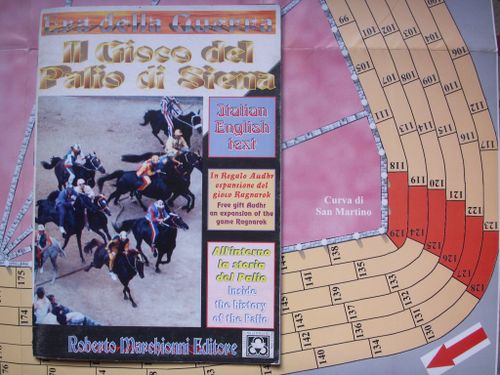
DescriptionThis game's theme is of a horse race held in Siena, Italy twice each summer. The city is comprised of 17 fiercely competitive neighborhoods (contrada) that each have their own flag and coat of arms (stemma). Ten of the 17 neighborhoods compete with one horse each in the race. The jockeys' garb are each inspired by their neighborhood's flag & stemma. A piece of fabric is embroidered with the contrada's stemma and this item is attached to the horse's head (I presume via braiding into the mane but I do not know) A horse is disqualified if its head piece is not present at the finish. The jockeys ride bareback and carry a large riding crop called a nerbata. Although striking other horses and jockeys with the nerbata is not permitted, it does happen fairly often. The winner of the Palio is literally the horse that crosses the finish line first, the rider is not required to be mounted. The people of the winning neighborhood brag about the victory constantly until the next race. This game is a very rare simulation of the Sienese Palio published in a sort of game collection series, the Italian "Era della Guerra" journal. The journal has several pages about the game's theme which will help you understand and appreciate the game. Example; The first question you will ask is: "Why doesn't this game have a start like other games that I have played. Its simple, in horse racing the gate opens and the horses can only run in one direction." I'll give away the answer, in the text of the journal you will learn that there is no starting gate, just a rope pulled tight across the track. Unlike the real Palio, where only 10 "contradas" among 17 are allowed to participate in the horse race around Piazza del Campo, "il Gioco del Palio di Siena" is open to 8-17 jockeys (a player may control more than one horse). Each "contrada" has 2 pawns: the "montata" and the "scossa". The first one shows the horse with its jockey, whereas the "scossa" shows the runaway horse without its jockey. The preliminary actions include: drawing lots for contrada and for horses "tratta", holding a sealed first price auction for jockeys, establishing a secondary purse that amounts to side bets among extra hostile "contradas", determining the post line up via a humorous and combative iterative process. Finally, the race starts. A rather sophisticated dice rolling system determines horse movement. There are two very sharp turns on the race-track where players must see if their horse falls or throws its rider. Throwing a rider does not put the horse out of the race, the player replaces the "montata" pawn with the "scossa" pawn. Players may give a nearby Horse-Jockey a wack with their club-like nerbata. However, wacking another horse-jockey with your nerbata can back fire on you. It is a good idea for the Player to hold back enough money from the earlier game phases to bribe other Jockeys during the race. The race-track is divided into 293 boxes, each with a number. The numbers on the spaces determine the turn order within each round, which is important in most all racing games. The numbers are distributed in a manner so that there is a logical best path. A horse that can get on this best path will gain ground on the leaders and the leader can pull away from the pack, unless another player has bribed the jockey!! Il gioco del Palio di Siena lasts for 3 complete laps. Nell’ora di Sunto (the bell in the Mangia tower), al tempo della Gloria! Game DiscussionsAdd CommentYou need to be logged in to comment. Insert Bullet List Please enter at least one item. Item: Item: Item: Item: Item: Insert Numeric List Please enter at least one item. Item: Item: Item: Item: Item: Insert Link Please enter the link of the website Optionally you can add display text Insert Email Please enter the email address Optionally add any display text Insert Image Please enter the link of the image Insert YouTube Video Please enter the link of the video MarketplaceNo listings at the moment. Do you own this game? Click here to list it for sale.
|
Best Sellers
Board Games
|
||||
Latest Searches: dunedin opoly | Fast sligpuck | Montana+o+poly | car packing game | art | PLAY+DOH+Party+Bag | Disruption | elder+gods | Coca+cola | mill bourne | foin | definition of board games | US Marine Monopoly | taboo game in spanish | Seasideheightsopoly | The book of lists | Monopoly+the+american"+ORDER+BY+1--+JffP | mini rails | clay | well | seven wonders duel | Hazard+o+poly | tavreli | epic | jackson monopoly | Rumi | eldritch+horro | miles borne | Oakland+raiders | Foodie
All Rights Reserved

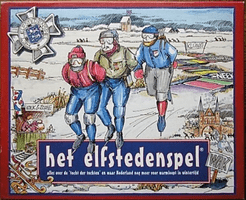
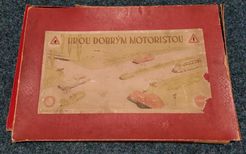
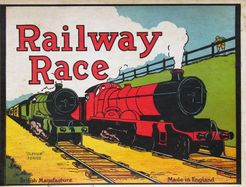
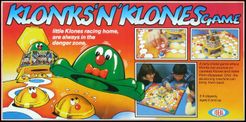
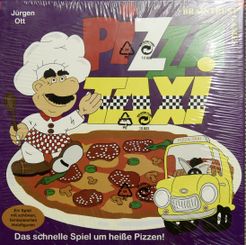

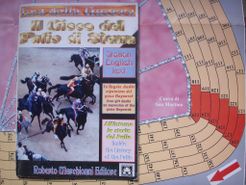
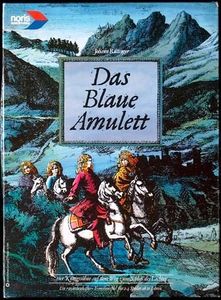
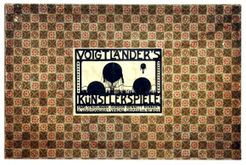
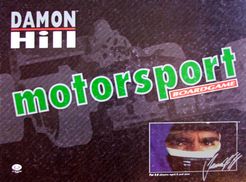
Comments (0)